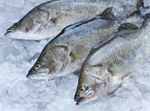



Our laboratory explores the occurrence, the physicochemistry and the bioavailability of food contaminants from the field to the consumer. Our specific research objectives are to:
- develop Foodomics tools to analyse trace chemicals in complex matrices
- investigate the sources and levels of emerging food toxicants
- study the chemistry of the target contaminants along the food supply chain

1- FOOD ANALYSIS: from TARGETED to NON-TARGETED ANALYSIS
New food safety challenges create a need for fast, robust and sensitive methods, able to screen for known and unknown compounds simultaneously. Using state-of-the-art techniques, such as ultra-high performance liquid chromatography coupled with high resolution accurate mass spectrometry (UHPLC-HRAM-MS), we are now developing non-targeted strategies to monitor chemical residues in food. New development focuses on:
- faster, simpler and greener sample preparation/extraction
- robust metabolomics data processing workflows for trace contaminants
- maintaining a strong quality assurance
Our team has successfully developed new techniques for:
- raw, processed and cooked food matrices
- abiotic samples (water, soils, sediments)
- faster, simpler and greener sample preparation/extraction
- robust metabolomics data processing workflows for trace contaminants
- maintaining a strong quality assurance
Our team has successfully developed new techniques for:
- raw, processed and cooked food matrices
- abiotic samples (water, soils, sediments)
ANALYTICAL CHEMISTRY

2-SOURCES & LEVELS of EMERGING FOOD CONTAMINANTS
With constant evolution in the food origin and production, environmental quality, food processing and packaging techniques, a range of “emerging toxicants” can now be detected in food. Using quality-assured methods, our work focus on tracking new food contaminants and new pathways of contamination. This work is necessary to characterize the risks, identify potential priority contaminants and define management response as early as possible.
We have been developping new analytical strategies for a wide range of food. For example, our work has recently shown that seafood may be exposed and accumulate complex mixtures of chemical residues, including "conventional contaminants" (e.g. metals, PCBs, DDTs), but also human pharmaceuticals, industrial chemicals and current-use pesticides. We have also recently developped a rapid tool for the screening of antibiotic residues in honey. We are also part of team currently working on the Responsible Replacement of Endocrine Disrupting Chemicals (click HERE) and monitore the levels of current and emerging contaminants in a range of food products and food contact materials.
We have been developping new analytical strategies for a wide range of food. For example, our work has recently shown that seafood may be exposed and accumulate complex mixtures of chemical residues, including "conventional contaminants" (e.g. metals, PCBs, DDTs), but also human pharmaceuticals, industrial chemicals and current-use pesticides. We have also recently developped a rapid tool for the screening of antibiotic residues in honey. We are also part of team currently working on the Responsible Replacement of Endocrine Disrupting Chemicals (click HERE) and monitore the levels of current and emerging contaminants in a range of food products and food contact materials.
EXPOSURE ASSESSMT

3-CONTAMINANT CHEMISTRY ALONG THE FOOD SUPPLY CHAIN
The Food and Agriculture Organization of the United Nations (FAO) recommends in the Codex Alimentarius that the effect of preparation and cooking should be integrated in the calculation of the dietary intake of contaminants. Such data are scarce though. In fact, the fate of trace contaminants, from the field all the way to the plate of the consumer, remains mostly unexplored (see our recent review on the topic here)..
Our research intends to provide a fundamental description of the physicochemistry of contaminants in food, from the field to the plate. Notably, our work examines the chemistry of contaminants throughout the various stages of food processing, storage and cooking. In current projects for example, we apply non-target analysis to elucidate the fate of antibiotic residues or endocrine disrupters. This fundamental work also support food professionals in identifying which processes favorize the elimination of chemical contaminants from the final food product.
Our research intends to provide a fundamental description of the physicochemistry of contaminants in food, from the field to the plate. Notably, our work examines the chemistry of contaminants throughout the various stages of food processing, storage and cooking. In current projects for example, we apply non-target analysis to elucidate the fate of antibiotic residues or endocrine disrupters. This fundamental work also support food professionals in identifying which processes favorize the elimination of chemical contaminants from the final food product.
CHEMISTRY






